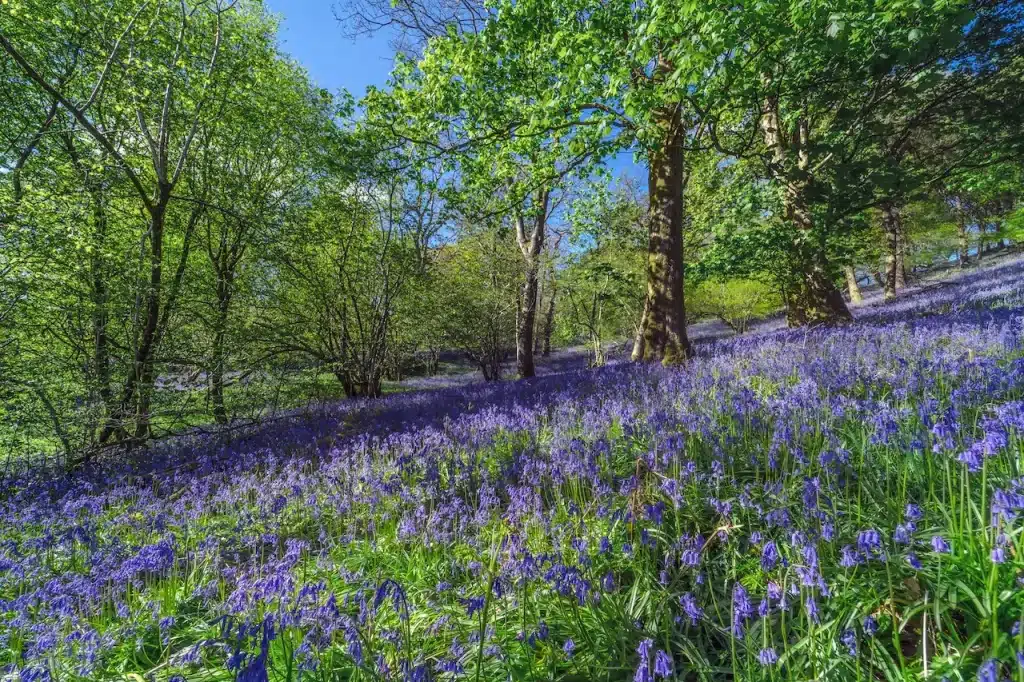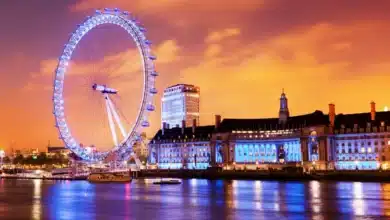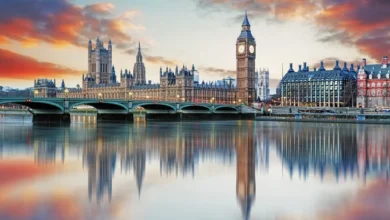What is Special About The New Forest UK?
The New Forest, located in Europe, is a critical area for nature and conservation. Its diverse landscape, consisting of ancient woodlands, wetlands, bogs, and open heathlands, is a sanctuary for many rare plant and wildlife species that have disappeared from the UK and Europe. The New Forest’s importance is reflected in its high conservation status and legal protection.
[ez-toc]

It is designated as a Special Site of Scientific Interest (SSSI), a Special Protection Area (SPA) for Birds, a Special Area of Conservation (SAC), and a Ramsar site (a Wetland of International Importance). These protections ensure that organizations managing the Forest have important conservation responsibilities and that activities and events occurring in the area are strictly regulated.
From scenic hiking and biking trails to the famous New Forest ponies, there’s something for everyone in this unique and captivating region. In this article, we will explore eight reasons why you should consider visiting the New Forest on your next adventure.
Immerse Yourself in Nature: Scenic Hiking and Biking Trails
The New Forest is a picturesque lowland natural park that spans 145 square miles of crown land. With no large mountains to obstruct your view, the park boasts wide trails that weave through ancient woodlands and heaths, providing countless opportunities for hikers and bikers to explore the diverse flora and fauna.
The New Forest is home to over 1,000 ancient trees, the highest concentration in Western Europe, and boasts the most extensive health remaining on the continent. As you wander through the trails, you’ll encounter a variety of woodland flowers, such as foxgloves and bluebells, and witness heather that comes alive with vibrant purple hues in August.
The park also supports marsh flowers, 15 varieties of orchids, rare and endangered fungi, uncommon butterfly species, numerous birds, and five species of deer.
For hikers of all abilities, Forestry England and the New Forest National Park offer lists of walking routes that meander through charming villages, woodlands, and country lanes. The park also provides accessible walks without stiles, catering to different levels of mobility. Additionally, the Forestry Commission maintains marked trails at popular car parks throughout the New Forest.
Encounter the Iconic New Forest Ponies
One of the most famous aspects of the New Forest is its charming ponies. Typically measuring no taller than 58 inches, these ponies are usually brown, bay, or chestnut in color. Although they have resided in the New Forest for over 2,000 years and roam freely, they are not entirely wild. Local residents own these ponies and have the right to allow their animals to graze in the open forest all year round. The constant grazing of approximately 5,000 ponies plays a crucial role in maintaining the landscape.
While these ponies may appear friendly and approachable, it’s essential to resist the urge to feed or pet them. Doing so can cause them to develop expectations and potentially display aggressive behavior. Though they may seem tame, they are semi-feral and can be unpredictable. For your safety, it’s best to observe and photograph them from a safe distance.
Explore Automotive History at the National Motor Museum
Situated in Beaulieu (pronounced BEW-lee by locals), the National Motor Museum offers visitors a diverse range of experiences. You can tour a palace, explore the ruins of a medieval abbey, stroll through exquisite gardens, and marvel at a collection of over 280 vehicles.
The museum’s collection includes classic family cars, motorcycles, buses, delivery vans, and Grand Prix racers, with the oldest vehicle dating back to 1875. There’s even a recreated 1930s garage filled with vehicles from that era.
The estate on which the museum now stands was once a royal hunting lodge and later a Cistercian abbey. Today, the abbey’s ruins offer a serene and peaceful atmosphere. The Palace House, which was once the abbey’s gatehouse, has been a part of the Montagu family since 1538. Restored to resemble its Victorian-era appearance, the house is adorned with guides dressed in period costumes who will lead you through the stately home.
Wetlands, Ponds, and Rivers
The New Forest is home to over 1,000 ponds and more than a dozen individual rivers, streams, and tributaries that flow through it before reaching the Solent, Southampton Water, and River Avon. It also has an extensive network of wetlands and bogs that hold and store water. These boggy areas, also known as mires, are among the last remaining in Europe, with 75% of such areas in North West Europe found in the New Forest.
The diverse flora and fauna that thrive in the heart of the New Forest rely on these freshwater sources for food, shelter, and breeding grounds. The waterways also play a crucial role in addressing climate change by storing carbon and mitigating flood risks for downstream communities.
Ancient Trees and Historic Monuments
The New Forest is home to some of the oldest trees in the country, with about 1,000 ancient trees recorded here – one of the highest concentrations in Western Europe. Some of the oldest trees include Yews, with some believed to be over 1,000 years old, followed by Oaks, which can live for up to 800 years, and Beech trees, which can reach 300 to 400 years of age.
In addition to ancient trees, the area is scattered with historical landmarks. There are 175 different scheduled monuments of national importance, protected and cared for by Forestry England. These include Bronze Age burial mounds and barrows, Iron Age hill forts, Roman roads, medieval hunting lodges, and World War II airfields and operational bases.
The Unique Flora of the New Forest
The New Forest boasts a rich diversity of plant life, including many rare species. Some of these rare plants include:
- Hampshire purslane, an extremely rare aquatic plant with reddish-purple and green leaves, is found only in the New Forest.
- Small fleabane, one of Britain’s most endangered flowering plants, is characterized by its bright yellow flower heads and hairy, reddish-brown stems.
- The coral necklace is a rare flowering plant with long trailing red stems and clusters of white flowers resembling beads threaded along a necklace.
- Pillwort, a small creeping fern with grass-like leaves and tiny round spore cases or ‘pills’ at its base, is widespread in the New Forest and one of the most important populations in Europe.
- Marsh clubmoss, an endangered plant with long, spikey, bright lime green stems, of which the UK holds a significant portion of the global population.
The New Forest is also home to over 2,500 types of fungi, including many rare and endangered species.

Wildlife Haven
Thanks to its diverse habitats, the New Forest is a sanctuary for wildlife. Many species that have vanished from other parts of the UK still thrive here.
The network of ponds and waterways in the New Forest creates ideal habitats for various species. A remarkable 75% of all dragonfly and damselfly species can be found here, along with the extremely rare Southern damselfly, Great crested newts (a protected and priority species across Europe), and the mighty Medicinal leech.
The New Forest is home to all six UK native reptiles, including Sand lizards, Adders, Slow worms, Grass snakes, Common lizards, and Smooth snakes. Smooth snakes, a rare and secretive species, can only be found in a few UK sites. The sandy heathland habitat of the New Forest, which it shares with the rare sand lizard, is a stronghold for this species.
Designated as a Special Protection Area for Birds, the New Forest is one of the last places in the UK where rare and endangered bird species like the Nightjar, Woodlark, Dartford Warbler, and the Curlew (now globally threatened with extinction) come to breed in significant numbers.
Deer had inhabited the New Forest since the time of William the Conqueror when the forest was a royal hunting ground. Currently, four species of deer live in the forest: Fallow deer, Roe deer, Sika deer, and the mighty Red deer. Occasionally, Muntjac deer, escapees from private estates, can also be spotted. Red and Roe’s deer is the only species native to Britain, with the Red deer being the UK’s largest mammal.
Livestock and Commoning: A Time-Honored Tradition
The New Forest is also home to the iconic New Forest Pony, which has been part of the traditional forest scene for over a thousand years. Donkeys, cows, pigs, and sheep belonging to local residents also inhabit the area. The owners of these animals are known as New Forest commoners, who practice the ancient right to graze their livestock in the open forest.
Each pony is marked with the owner’s brand, while cows and sheep carry identification tags in their ears. Donkeys have a brand or an ear button. The local agister is familiar with the animals in their area and can often identify them individually.
These animals roam freely, grazing on the most nutritious grasses and vegetation to maintain their health. Many rare and precious plants and creatures thrive in the New Forest specifically because of the way the area is grazed by the commoners’ animals. Their grazing keeps the grass short and creates a ‘browse line’ at about head height.
Visitors should respect the animals’ space and avoid feeding or petting them. It is essential to let them forage for themselves and maintain their natural behavior.
Conclusion
The New Forest is a unique and internationally important haven for nature, offering diverse landscapes and habitats that support a wide range of rare and endangered species.
Its rich history, ancient trees, and historic monuments make it a fascinating destination for visitors seeking to explore the natural world and learn about the past. With ongoing conservation efforts and responsible visitation, the New Forest will continue to be a sanctuary for the diverse flora and fauna that call it home.




